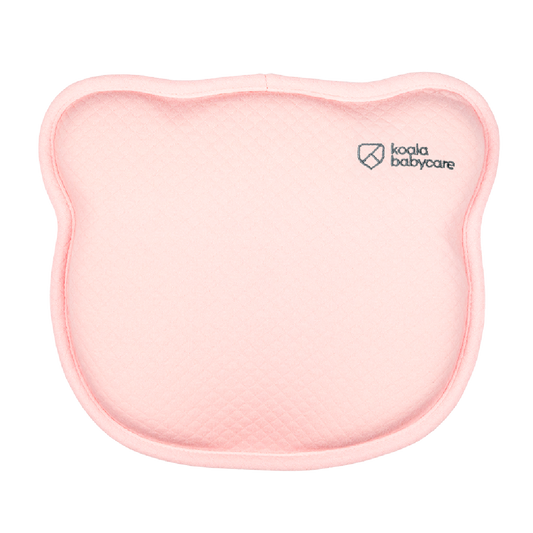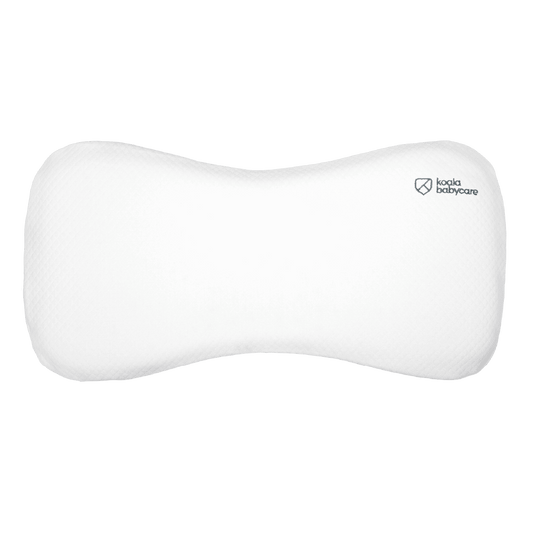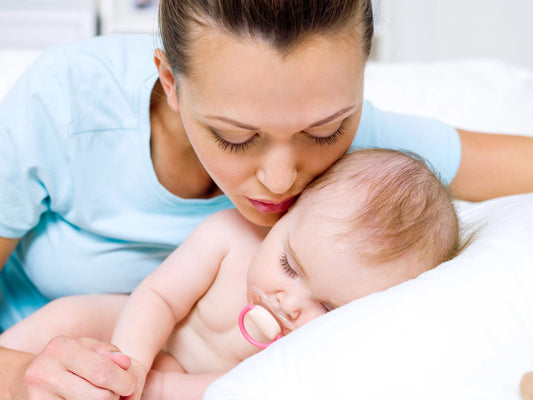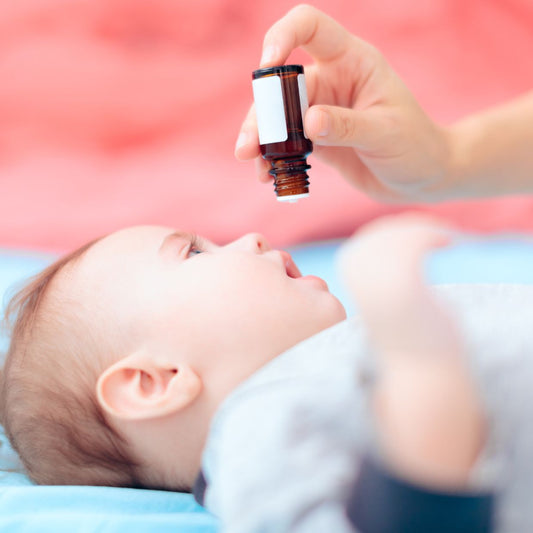Reflux in infants is very common, and almost always completely natural and harmless. Mums and dads are often especially worried about reflux during sleep-time, afraid that their baby may choke whilst sleeping.
A baby's sleep (and consequently, mum and dad’s) may be disturbed by their milk coming back up. What is the best position to prevent regurgitation whilst a baby sleeps? We take a look below.
Why do babies suffer from reflux?
Gastro-oesophageal reflux is a very common phenomenon in newborns. In most cases, it isn’t usually cause for concern and is harmless.
Reflux is when a baby brings up some amounts of milk mixed with saliva, shortly after feeding. It sometimes happens a few hours after a feed, even while the baby is sleeping. What causes reflux?
- A baby’s diet, which is exclusively based on liquids
- Immaturity of a baby’s digestive system, in particular the cardia valve which connects the stomach and oesophagus and prevents stomach contents from coming back up.
This is why infant reflux commonly resolves spontaneously by 12 months of age, as an infant’s digestive system matures, and their cardia valve function improves as they grow.
Reflux in newborns: when should I be concerned?
As we were saying, regurgitation affects more than half of all babies, especially between five and eight weeks of age. It is to be considered to be absolutely normal, with just a few exceptions.
When should we be concerned? If your baby is not growing as they should or if they are vomiting. In these cases, you must consult your doctor immediately, they will be able to tell you if your baby is suffering from gastro-oesophageal reflux disease (GORD) and provide advice on how to treat it.
In such cases, where infants are growing healthily and regularly, there is no need to worry or for using medication. The situation, however unpleasant it is for a baby, will usually resolve by the time they reach 12 months old.
It will improve notably when they start to eat solid food and learn to stand upright.
The best sleeping position for infants with reflux
The best sleeping position for a newborn baby with reflux is on their backs (supine position), even better if they lie on a surface with an incline angle of about 30 degrees.
If their head and chest are elevated slightly in relation to the rest of their body, the backflow of milk from their stomach is reduced.
Many cribs and prams come with a reclining backrest these days. For cots, you can place some towels or a pillow under the mattress.
Why should babies always lie on their backs?
Our grandmothers, and perhaps even mothers, might firmly state that the best sleeping position for our little ones who suffer from reflux is on their stomachs. Nothing could be more wrong. There are two reasons why:
First and foremost, when lying down, infants should always be placed on their backs (i.e., the supine position) to prevent SIDS (Cot Death Syndrome). This should continue until they learn to roll over by themselves.
The second reason is that by lying on their back (in thesupine position), it is much more difficult for any spit-up to enter their airways. In fact, when on their back, the trachea (where air passes) is positioned above the larynx (where food passes).
It is, therefore, physically impossible for regurgitation to end up in the trachea from the larynx. In contrast, when lying on their stomach (prone position), the digestive tract is above the airway and the risk of aspiration increases in the event of regurgitation.
In the past, however, it was believed that the best position to prevent regurgitation backflow from causing obstruction to airways, was for a baby to lie on their stomach (in the prone position). Therefore, those close to you who advise you to place your infant on their stomach are doing so in good faith. But today we know that nothing could be more wrong, primarily due to SIDS.
I can hear you thinking: "What about placing my baby on their side?". This position also has a higher incidence of cot death, as there is a high risk that the baby will gradually roll over onto their stomach when asleep.
Remedies for reflux in babies
Now we’ve established that the best sleeping position for an infant is on their back (supine position), preferably at a 30° angle, what other measures can be taken to ease reflux in babies?
- Give your baby smaller but more frequent feeds.
- Try to feed your baby more slowly, for example, by taking a few breaks during a feed to allow them time to burp.
- Keep your baby in an upright position for about 15 minutes after feeding to counteract any upward flow of milk.
- Infant massages are a great help in improving digestion in babies.
- Carry your baby in a baby carrier or wrap rather than having them spend too much time lying down in their crib or car seat, by doing so they will maintain an upright position for longer.
Let's dispel an old myth: there is no link between a mum's diet and gastro-oesophageal reflux. So, dear mums, don't listen to anyone who tells you if you eat this or that your baby will get reflux!
You can help ease your baby’s reflux as well as prevent and limit any regurgitation whilst your baby sleeps, by lying them on their back (supine position) with an incline angle of 30 degrees. There are many prams on the market today which have reclining backrests. For cots, you can place a pillow or towels under the mattress.








